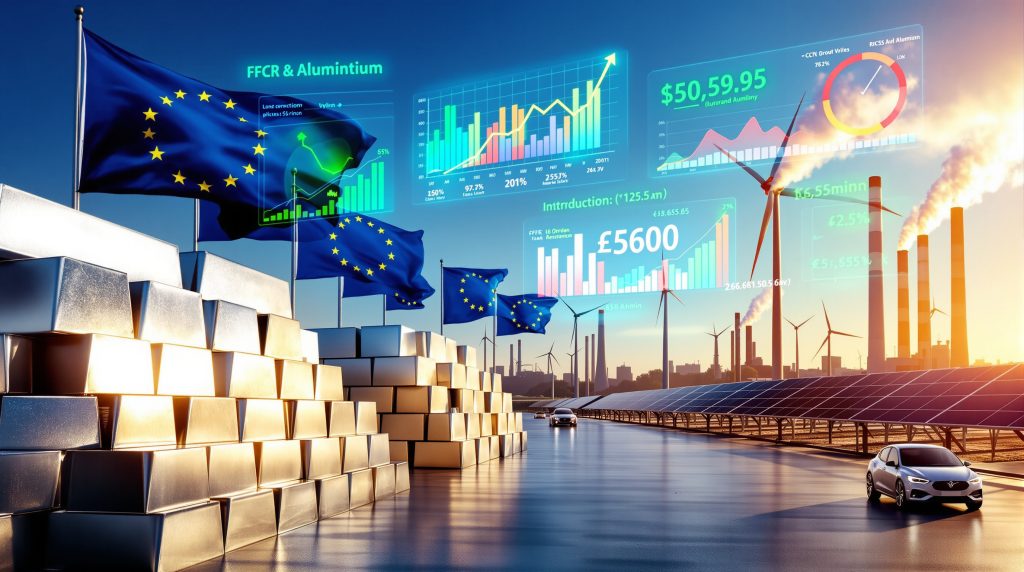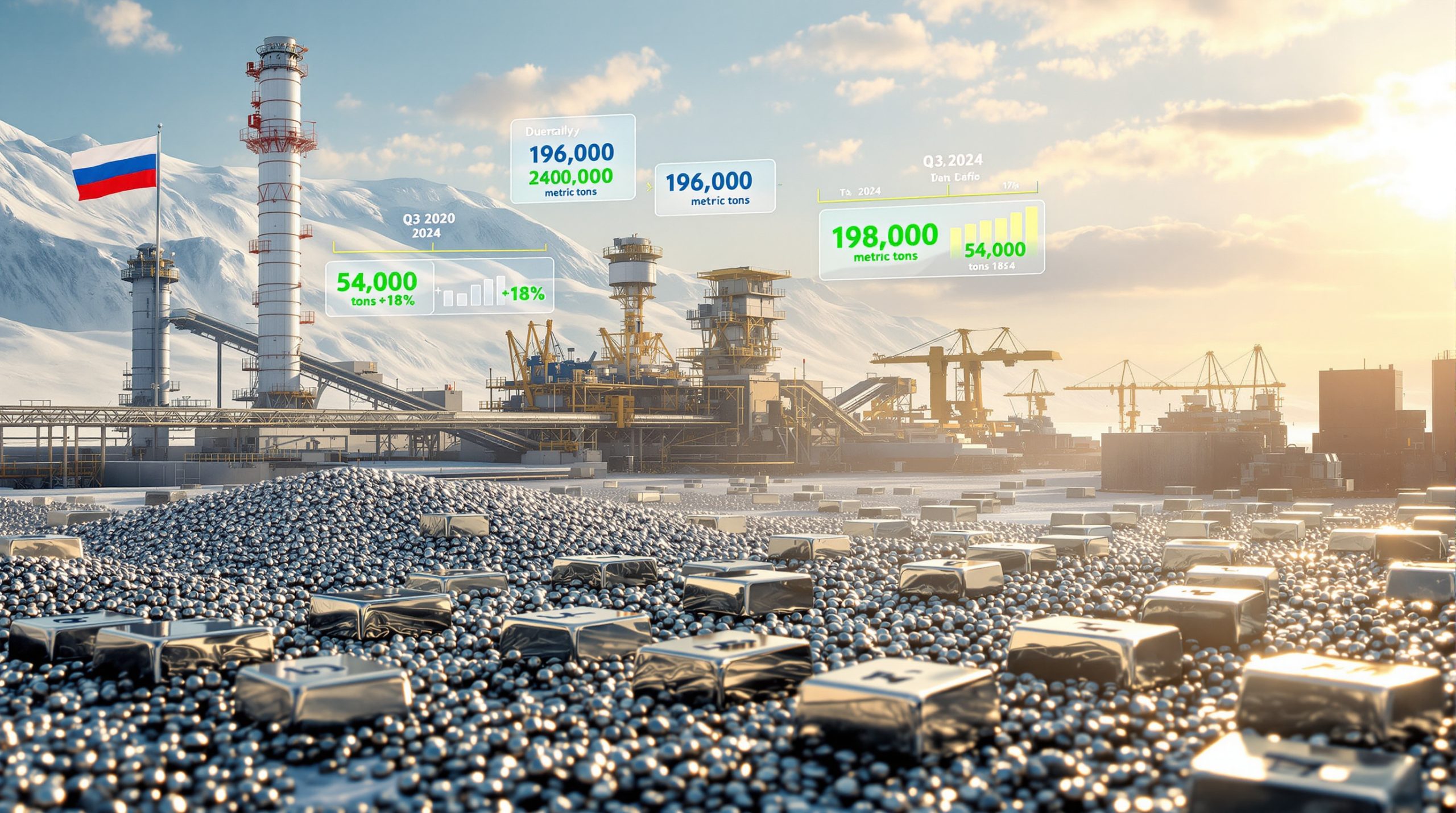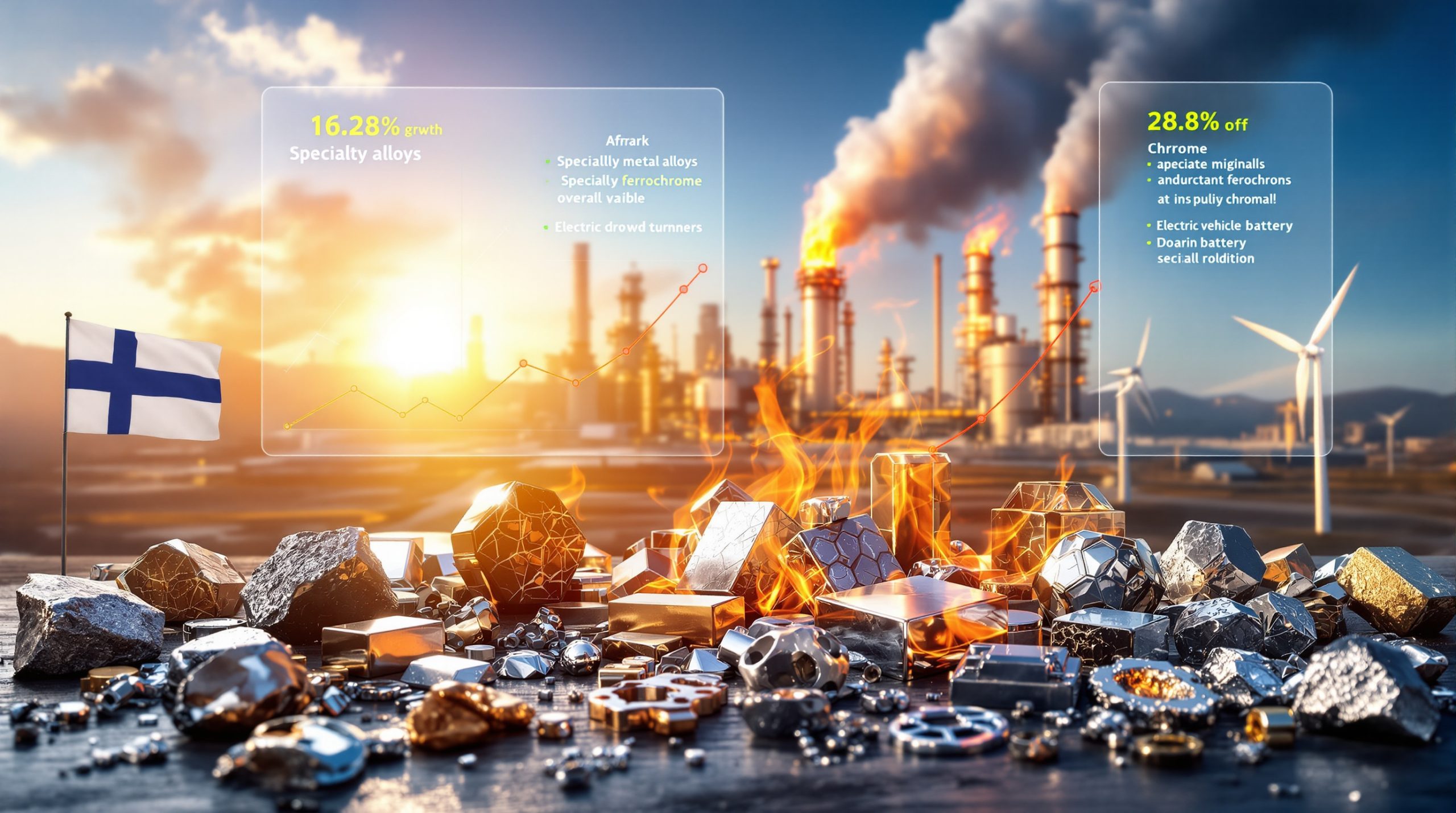Europe's Green Aluminium Crisis: Understanding the Supply Shortage
Europe faces an unprecedented challenge in securing environmentally sustainable primary aluminium, creating ripple effects across manufacturing sectors and climate commitments. The continent's green aluminium deficit in Europe stems from a convergence of energy constraints, infrastructure limitations, and supply disruptions that threaten industrial competitiveness.
The crisis has intensified following recent production halts at key facilities, with electricity-related problems at aluminium smelting operations in Iceland and Mozambique disrupting regional supply chains. These developments highlight Europe's growing vulnerability in securing duty-free green P1020 aluminium supplies.
Defining Low-Carbon Aluminium Production Standards
Low-carbon aluminium production relies heavily on renewable energy sources to power the energy-intensive Hall-Héroult electrolytic process. The carbon intensity of primary aluminium varies dramatically based on the electricity source used in smelting operations.
Production Method Comparison:
| Method | Carbon Intensity (tonnes CO2/tonne Al) | Primary Energy Source |
|---|---|---|
| Hydroelectric-powered | 1.5-4.0 | Renewable hydro |
| Coal-powered facilities | 15-20 | Thermal coal |
| Natural gas operations | 8-12 | Natural gas |
| Wind/solar powered | 2.0-5.0 | Variable renewables |
The Hall-Héroult process consumes approximately 13-16 megawatt-hours of electrical energy per tonne of aluminium produced. This massive energy requirement makes the carbon composition of the electrical grid the primary determinant of environmental impact.
Iceland's Nordural facilities demonstrate the potential of renewable-powered production, operating with nearly 100% hydroelectric power to achieve carbon intensities near the 1.5 tonne CO2/tonne threshold. Similarly, Norway's primary aluminium operations leverage abundant hydroelectric resources to maintain competitive low-carbon production at commercial scale.
Quantifying Europe's Green Aluminium Supply Gap
Recent supply disruptions have fundamentally altered European aluminium market dynamics. The Nordural Grundartangi facility's electrical equipment failure eliminated 213,000 tonnes of annual capacity, representing a 67% reduction in facility output with restoration timelines extending 6-9 months based on historical precedent.
South32's Mozal smelter in Mozambique faces additional uncertainty, with electricity supply agreement negotiations stalled ahead of the March 2026 contract expiration. The facility's production forecast for 2026 has dropped to 240,000 tonnes from historical capacity exceeding 500,000 tonnes annually.
Market analysts initially projected a modest surplus of 231,000 tonnes for 2026 before accounting for the Nordural disruption. However, these forecasts require substantial revision given the scale of production losses across multiple facilities serving European markets.
Critical Supply Timeline:
- October 2025: Century Aluminum announces Nordural Grundartangi potline shutdown
- March 2026: South32 Mozal electricity agreement expires without renewal confirmation
- Mid-2026: Full impact materialises across European manufacturing sectors
Market participants expect the Icelandic outage to persist at least six months, with recovery duration dependent on whether frozen pots require complete reconstruction or controlled wind-down procedures enable faster restoration.
Supply Chain Disruption Analysis
European traders have identified the concentration risk in relying on specific "green" origins for high-purity aluminium supplies. Three major sources face simultaneous uncertainty: Icelandic production (Nordural), Canadian volumes (subject to US trade negotiations), and Mozambican output (Mozal power agreement).
The timing of these disruptions creates compounding effects:
- Immediate impact: 213,000 tonnes lost from Nordural Grundartangi
- Medium-term risk: 240,000+ tonnes potentially affected at Mozal
- Trade flow shifts: Canadian volumes increasingly attracted to US markets
European buyers must formulate contingency plans as traditional supply sources become unreliable. The situation represents what industry participants describe as an unprecedented convergence of supply risks affecting the continent's green aluminium availability.
Energy Cost Disadvantages Driving Import Dependence
European primary aluminium producers face fundamental cost disadvantages that have accelerated capacity rationalisation decisions. Wholesale electricity prices create significant competitive gaps compared to other global regions.
Regional Energy Cost Comparison:
- European smelters: €75-100 per MWh
- Chinese facilities: €25-35 per MWh equivalent
- North American operations: €30-45 per MWh equivalent
- Nordic hydroelectric: €20-40 per MWh
At typical Hall-Héroult energy consumption rates, European producers face electricity costs of €975-1,200 per tonne of aluminium, compared to €390-480 for Chinese facilities. This €490-810 per tonne disadvantage explains the continent's declining production capacity and increased import reliance.
Infrastructure Constraints:
- Grid congestion limiting reliable industrial power access
- Transmission bottlenecks affecting manufacturing zones
- Complex regulatory frameworks increasing operational costs
- Limited availability of long-term power purchase agreements
European primary aluminium capacity has contracted significantly since 2008, with closures accelerating following the 2022-2023 energy price crisis. The combination of high energy costs and supply reliability concerns continues driving industrial capacity offshore.
Premium Escalation Reflecting Market Stress
Aluminium scrap assessments in European markets demonstrate increasing supply pressure. The P1020A premium for Rotterdam delivery has climbed from €265-285 per tonne to €275-300 per tonne within a single week following the Nordural announcement.
Premium Evolution Indicators:
- January 2024: $180-200 per tonne baseline
- July 2024: $220-240 per tonne (+20% energy concerns)
- October 2024: $265-285 per tonne (+18% supply tightening)
- Late October 2025: $275-300 per tonne (+6% crisis acceleration)
US market premiums have simultaneously increased to 80-83 cents per pound, creating arbitrage opportunities that redirect Canadian volumes away from European buyers. This premium convergence intensifies competition for North American supplies that European manufacturers increasingly require.
CME aluminium European premium futures reflect market expectations of continued tightness, with December 2025 contracts settling at $308 per tonne, representing a $3.67 daily increase as supply concerns intensify.
Carbon Border Adjustment Mechanism Implications
The European Union's Carbon Border Adjustment Mechanism implementation creates additional complexity for aluminium sourcing strategies. While CBAM focuses on direct emissions (Scope 1), European manufacturers increasingly reject coal-intensive brands to meet corporate sustainability commitments regarding indirect emissions (Scope 2).
CBAM Timeline Impact:
- October 2023: Reporting phase initiated
- January 2026: Financial obligations commence
- Estimated cost: €50-80 per tonne for high-carbon imports
This regulatory framework further constrains European sourcing options, as coal-powered aluminium faces carbon costs and corporate purchasing restrictions. The mechanism effectively reduces available supply whilst simultaneously increasing costs for non-renewable alternatives.
Trade Pattern Modifications
Potential modifications to US-Canada trade agreements could significantly impact European supply availability. Furthermore, reports suggest possible reductions in the current 50% tariff on aluminium imports into the United States, potentially redirecting 150,000-200,000 tonnes annually away from European buyers.
Alternative Supply Challenges:
- Middle Eastern smelters lack sufficient green credentials for European requirements
- Russian sources face ongoing sanctions restrictions
- Chinese production carries prohibitive carbon intensity
- African facilities experience infrastructure and logistics limitations
The convergence of trade policy changes and supply disruptions creates a perfect storm for European aluminium procurement. Consequently, how tariffs impact investment decisions forces manufacturers to compete for increasingly scarce low-carbon supplies at higher prices.
Industrial Sector Impact Assessment
The automotive industry faces particular vulnerability from the green aluminium deficit in Europe. Electric vehicle manufacturers require low-carbon aluminium for battery enclosures, thermal management systems, lightweight body panels, and charging infrastructure components. Corporate sustainability commitments prevent substitution with higher-carbon alternatives.
Renewable Energy Infrastructure Demands:
- Solar panel frames requiring corrosion-resistant aluminium
- Wind turbine components demanding high-strength alloys
- Electrical transmission systems needing conductive properties
- Energy storage installations requiring thermal management
These sectors collectively consume approximately 180,000 tonnes of European green aluminium annually, creating inflexible demand that cannot easily absorb supply shortfalls through material substitution or demand destruction.
Price Trajectory Projections
LME aluminium prices have responded to supply concerns, climbing to $2,804.50 per tonne as markets begin pricing the Nordural outage impact. Analyst projections suggest potential price increases to $3,000-3,200 per tonne by mid-2026, representing 25-35% increases from current levels.
Price Driver Analysis:
- Supply-demand imbalances intensifying
- Energy cost inflation continuing
- Inventory drawdowns accelerating
- Risk premiums expanding
The market had been characterised as "very balanced, with only a small surplus" before recent disruptions. The elimination of surplus conditions creates price volatility as buyers compete for limited supplies.
Risk Mitigation Strategies
European manufacturers must adopt comprehensive supply chain risk management approaches to navigate the green aluminium deficit. Strategic procurement requires diversification across multiple continents and production methods.
Recommended Framework:
- Establish inventory buffers equivalent to 3-6 months consumption
- Negotiate flexible contracts allowing volume and timing adjustments
- Diversify supplier relationships across geographic regions
- Invest in recycling partnerships to reduce primary aluminium dependence
- Explore material alternatives where performance requirements permit
Long-term contracting has become standard practice as buyers seek supply security. In addition, vertical integration investments and recycling capacity expansion represent structural responses to persistent supply constraints.
Circular Economy Acceleration
Enhanced recycling infrastructure offers the most immediate pathway to reduce primary aluminium requirements. Current European recycling rates of approximately 70-75% could potentially increase to 85% with advanced sorting systems and improved collection networks.
Recycling Potential:
- Advanced sorting technologies improving scrap quality
- Expanded collection networks increasing material recovery
- Processing efficiency gains reducing energy consumption
- Quality preservation enabling multiple recycling cycles
Achieving 85% recovery rates could reduce primary aluminium requirements by 300,000-400,000 tonnes annually. However, this would substantially alleviate import dependence whilst supporting circular economy objectives.
Long-Term Infrastructure Solutions
Restoring European green aluminium self-sufficiency requires substantial infrastructure investments. For instance, mining decarbonisation benefits from planned projects targeting 2-3 GW of dedicated renewable capacity for aluminium smelting could restore 400,000-500,000 tonnes of annual production by 2028-2030.
Technology Innovation Pathways:
- Inert anode technology reducing energy consumption 15-20%
- Hydrogen-based reduction processes eliminating carbon emissions
- Advanced electrolysis improvements increasing efficiency
- Integrated renewable energy systems ensuring supply reliability
Industry estimates suggest restoring European green aluminium self-sufficiency requires €8-12 billion in combined infrastructure, technology, and energy investments over the next decade.
Policy Response Requirements:
- Industrial electricity pricing reform
- Strategic material stockpiling programmes
- Trade agreement modifications
- Domestic production incentive schemes
The scale of required investment reflects the challenge of re-establishing competitive primary aluminium production in a high-energy-cost environment. Nevertheless, this must be achieved whilst meeting stringent environmental standards.
Market Psychology and Investment Implications
The aluminium market has shifted from balanced conditions to supply deficit psychology within weeks. This rapid transition demonstrates how concentrated the global supply base has become, with individual facility disruptions capable of reshaping entire regional markets.
Investment Strategy Considerations:
- Long aluminium positions benefit from supply constraints
- Premium products command increasing price differentiation
- Renewable energy projects gain strategic importance
- Recycling infrastructure investments show enhanced returns
The crisis highlights the strategic value of low-carbon aluminium as both an industrial input and investment theme. Companies controlling green production capacity or advanced recycling capabilities are positioned to capture growing premium values.
Future Outlook and Strategic Implications
Europe's green aluminium deficit in Europe represents a structural shift rather than temporary disruption. The combination of energy disadvantages, regulatory requirements, and supply concentration creates persistent challenges requiring long-term strategic responses.
Key Developments to Monitor:
- Nordural Grundartangi restoration timeline and success
- Mozal electricity agreement negotiation outcomes
- US-China trade impacts on global supply chains
- European renewable energy capacity additions
The crisis demonstrates how climate commitments and industrial competitiveness intersect in complex ways. European manufacturers face choices between supply security, cost optimisation, and environmental objectives that will shape industrial strategy for the remainder of the decade.
Furthermore, Europe must focus on green metals leadership initiatives to address this structural challenge. Additionally, developments in EU scrap export restrictions could significantly impact the circular economy approach to addressing supply shortfalls.
Disclaimer: This analysis is based on publicly available information and market reports. Aluminium price projections and supply forecasts involve inherent uncertainty and should not be considered as investment advice. Market conditions may change rapidly based on policy decisions, facility operational status, and global economic factors.
Looking to Capitalise on Europe's Green Aluminium Supply Crisis?
Discovery Alert's proprietary Discovery IQ model delivers real-time alerts on significant aluminium and industrial metals discoveries across the ASX, helping investors identify actionable opportunities as supply shortages drive market premiums higher. Begin your 30-day free trial today to position yourself ahead of the market and discover why major mineral discoveries can generate substantial returns by exploring our dedicated discoveries page.




